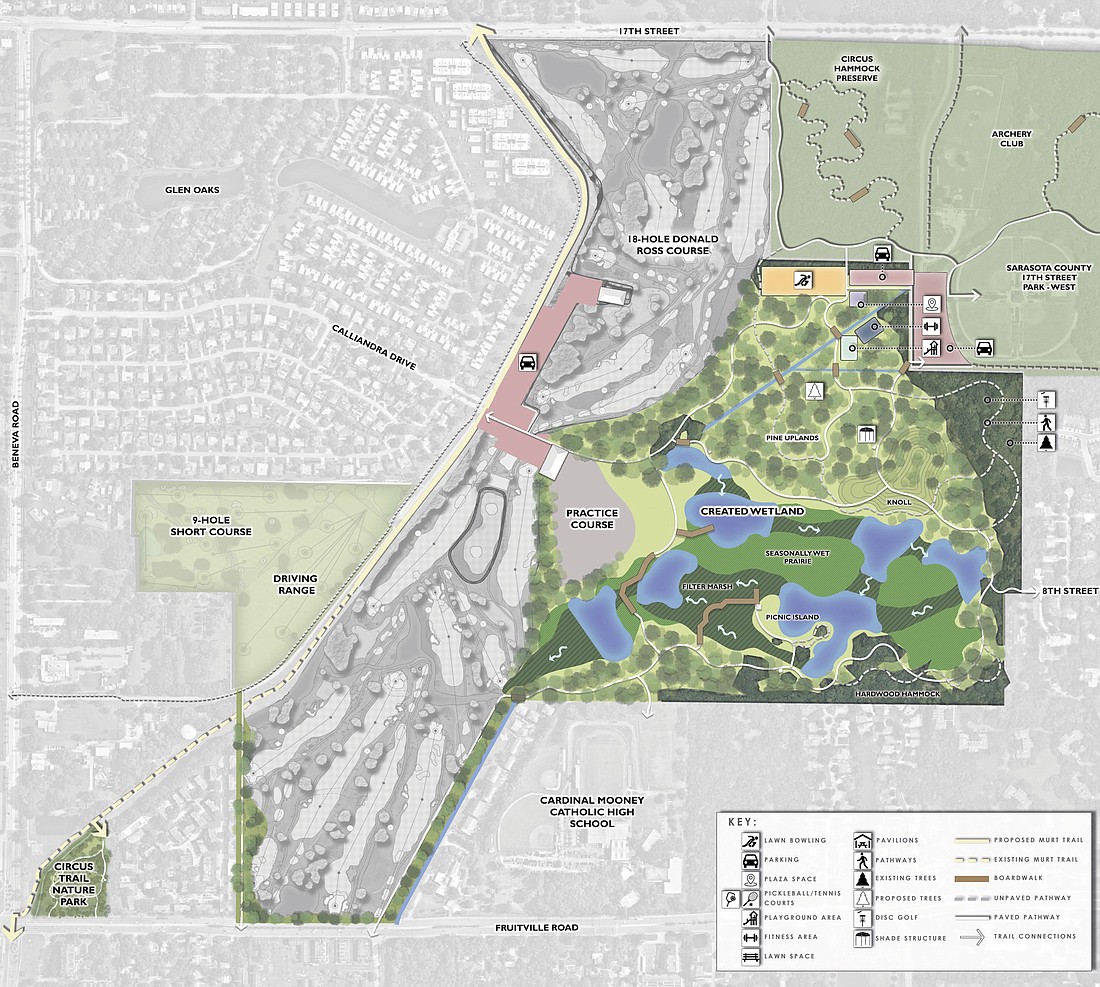- March 16, 2025
-
-
Loading

Loading

As Richard Mandell spoke about two different proposed configurations of parkland at Bobby Jones Golf Club, he detailed the nuances of how the plans would affect the layout of the golf facilities on the city-owned property.
Mandell, a golf architect the city hired to design a renovation plan for Bobby Jones, was part of a Nov. 20 presentation at the course’s clubhouse. In conjunction with the effort to overhaul the golf complex — and downsize the facility to 36 holes — the city selected a team that produced three concepts for incorporating public park space into the 293-acre site.
For the first two options, Mandell highlighted key differences in the golf configuration. Although the main 18-hole, Donald Ross-designed course remained unchanged in all of the concepts, Mandell said the third 9-hole regulation course flowed better in option two, which also benefited from the presence of a longer driving range.
For the third, however, his analysis was less intricate.
“Option three has nine less holes,” Mandell said.
From a golfer’s perspective, that was the defining characteristic of the third proposal: eliminating nine regulation holes, which reduces the golf footprint to the 18-hole Ross course and a 9-hole practice course. Whereas the first two options offered different layouts for the same general recreational amenities on a similar footprint, option three went beyond the scope of renovations the City Commission endorsed in September, which specifically called for a 36-hole facility.
For the planners who designed it, the third option represented a different perspective on the right mix of golf, other recreation and natural amenities at Bobby Jones.
Chris Cianfaglione, a landscape architect with Kimley-Horn leading the park planning process, said the history of golf on the site was important. But he noted the property had a history prior to the 1920s; before there was a golf course, there were natural wetlands. He said option three was developed in part to gauge public interest in a plan placing greater emphasis on nongolf uses.
Cianfaglione said all three options were developed in response to input gathered in October and that the public would continue to drive the city’s decision-making. He felt each plan sought to balance golf and parkland.
“I think what we’re trying to do is not make it about one or the other,” Cianfaglione said.
For option three, Cianfaglione used the Celery Fields as a point of reference, another project Kimley-Horn helped design. The centerpiece of the plan includes attempts to reproduce the natural environment that was once on the site: created wetlands with boardwalks and an area for picnicking, an upland pine canopy with hundreds, if not thousands of trees planted, a knoll constructed by terraforming the property.
Cianfaglione said this plan was also born in part out of a sense of financial prudence. He said the project team considered a strategy for trying to attract as much grant money as possible. That meant prioritizing public amenities the entire community could use rather than more golf holes, which would attract a smaller segment of the population and require fees for people to access.
That’s also why option three places an emphasis on natural features. Elements like the created wetlands would serve as water quality enhancements, another bonus for grant consideration. The city is discussing a partnership with the Conservation Foundation of the Gulf Coast to designate the Bobby Jones site as public parkland in perpetuity, and coming up with a financial plan for the future of the property is part of the ongoing negotiations with the nonprofit.
“We’re trying to find something that attracts millions of dollars in funding potential,” Cianfaglione said.
Cianfaglione reiterated that the project team believed all three proposals would represent an improvement for Bobby Jones. All three add at least 63 acres of parkland, 23 acres of created wetlands and more than 2 miles of trails. Similar recreational amenities are included in each plan, such as a playground, lawn bowling and disc golf space. Each proposal links Bobby Jones with county-owned parkland to the northeast, a city-owned park at Fruitville Road and Beneva Road and recreational trails to the east — including, eventually, the extended Legacy Trail at Payne Park.
Option one places the natural features on the east side of the property and creates a more traditional community park on the west side, west of Circus Boulevard. Option two groups those amenities on the east side of the land, which shifts a portion of the created wetlands out of the golf course and into the park area.
Comments on Post-it notes at the Nov. 20 workshop showed a mixed reaction to the different options presented. Cianfaglione said the project team would use the input it receives to continue to refine the plans for a future City Commission presentation, tentatively scheduled for January.